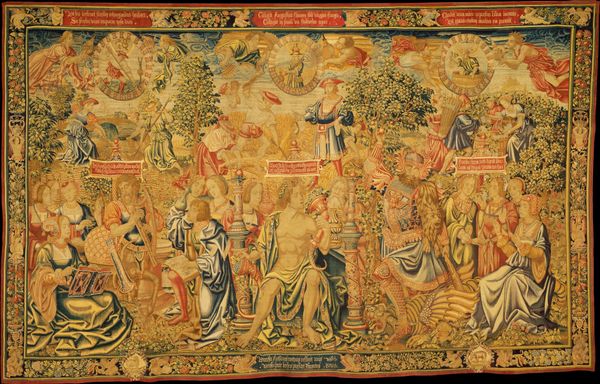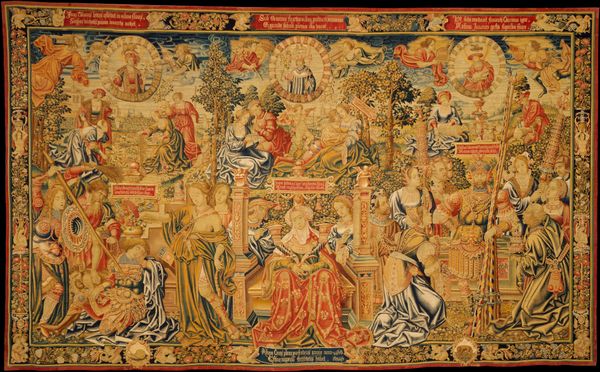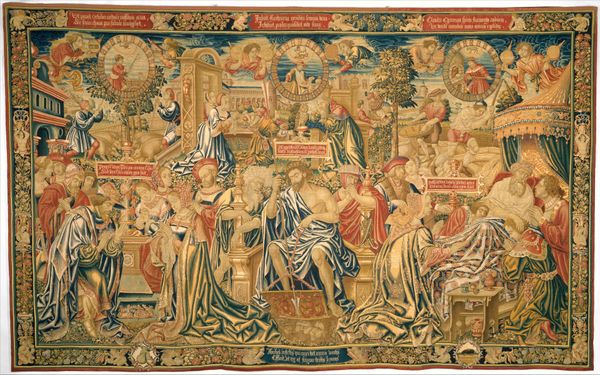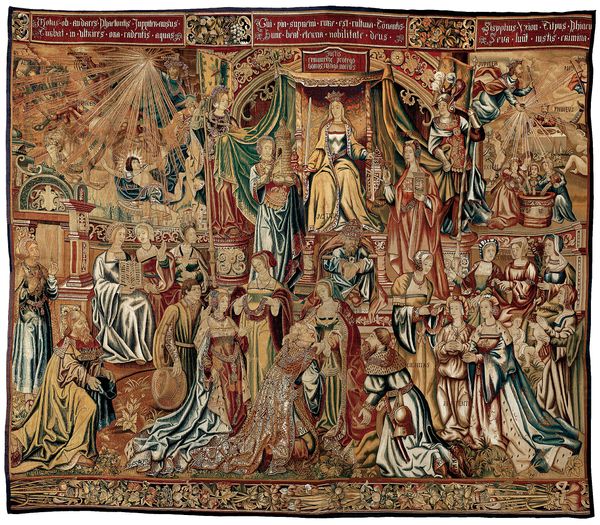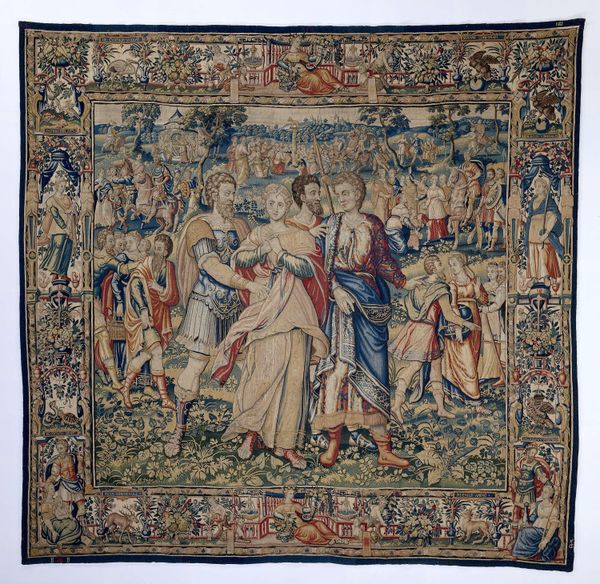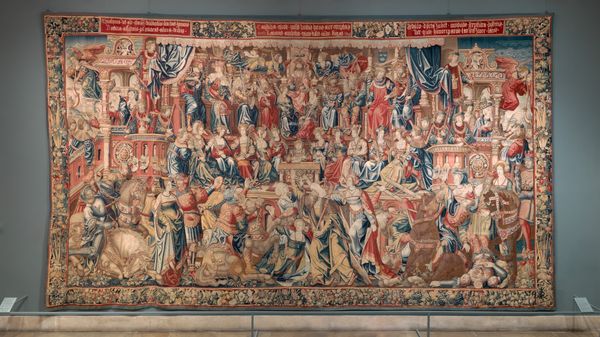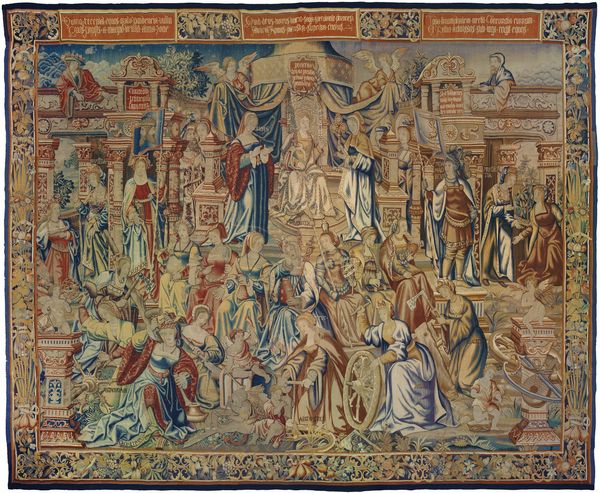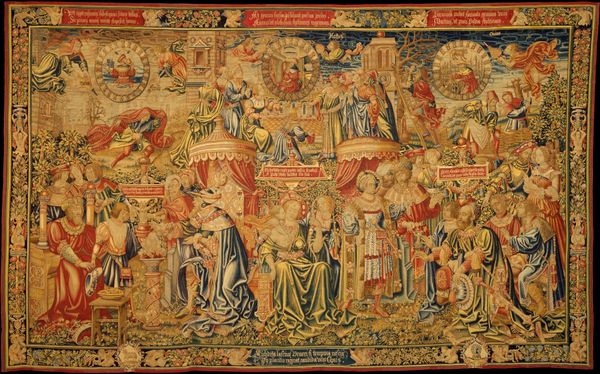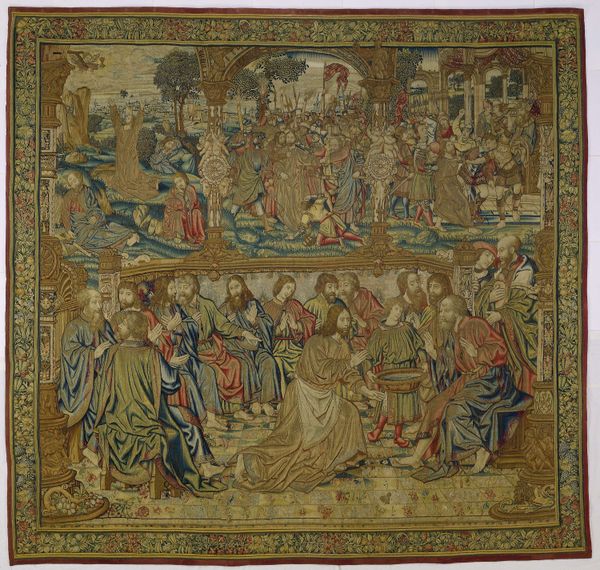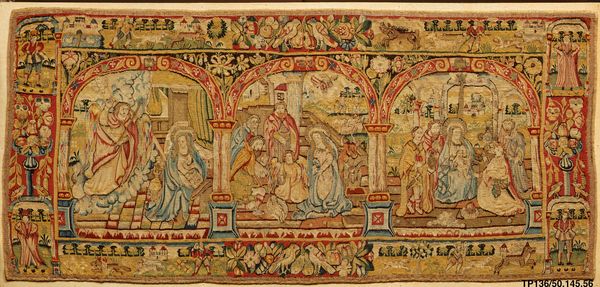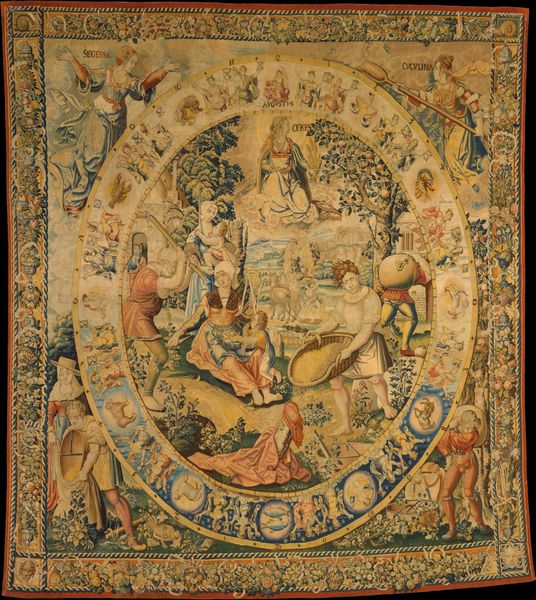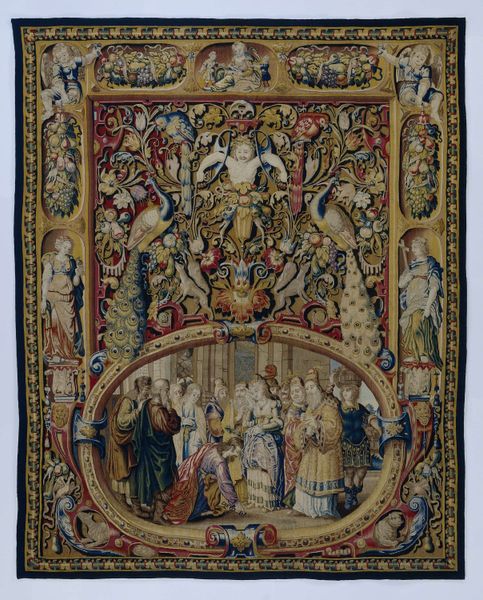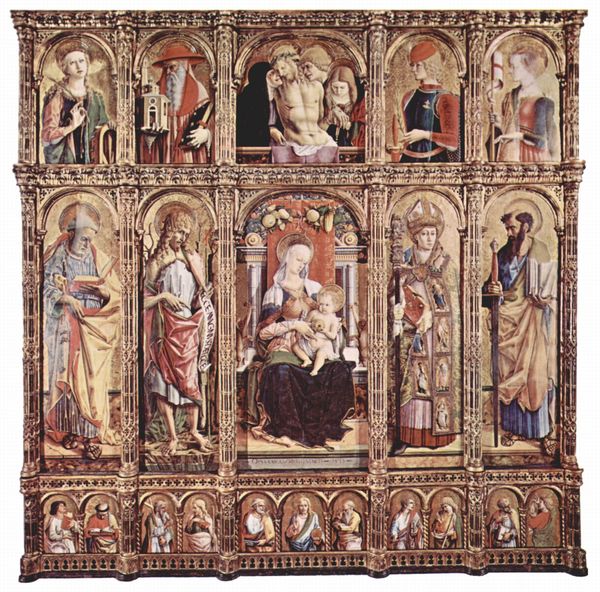
The Journey and Temptations of the Prodigal Son c. 1507 - 1540
0:00
0:00
textile
#
medieval
#
narrative-art
#
textile
#
figuration
#
history-painting
Copyright: Public Domain
Curator: Standing before us is "The Journey and Temptations of the Prodigal Son," a tapestry likely created between 1507 and 1540. Editor: My first impression is of overwhelming opulence, really. Look at the dense crowd of figures and elaborate textiles... almost claustrophobic. Curator: Exactly. This is more than mere decoration; these narrative tapestries played a vital role in shaping social values. It retells a parable deeply entrenched in themes of sin, redemption, and the fraught dynamic between individual desire and familial expectations. Editor: Absolutely. The prodigal son is such a loaded symbol. He represents a defiance of patriarchal norms and the allure of individual liberty, while at the same time serving as a cautionary tale about self-destruction and the importance of obedience. Note, too, the central position and luxurious garb of the seated father. Curator: Note the recurring symbols of abundance. The lavish banquet in one scene speaks not only of extravagance but also of social standing, a stark contrast to the son's eventual poverty and despair depicted later on. And look at how subtly those repeated motifs guide the viewer. The artist is evoking complex associations and reinforcing moral lessons about economic responsibility and the perils of excessive indulgence. Editor: It really comes through the visual cues around sin, waste, and ruin. He squanders the estate then begs for food. In medieval times, these themes carried heavy moral weight within communities dependent on generational stability. The tapestry itself embodies social expectations and the pressure exerted on individuals to adhere to them. Curator: True, and that context shaped understandings of family structure and communal stability. For centuries these motifs functioned like social allegories playing out through time. Editor: It gives us a powerful look into the ways that art can function not just as a mirror of its culture, but also as an active participant in the dialogue shaping gender roles, societal power structures and expectations. Curator: Absolutely, looking at "The Prodigal Son," what’s striking to me is how it showcases both visual beauty and narrative storytelling to comment on timeless themes. Editor: Indeed; the richness in detail is astounding, reminding us of the cultural values placed on continuity that inform so much visual symbolism over time.
Comments
No comments
Be the first to comment and join the conversation on the ultimate creative platform.
